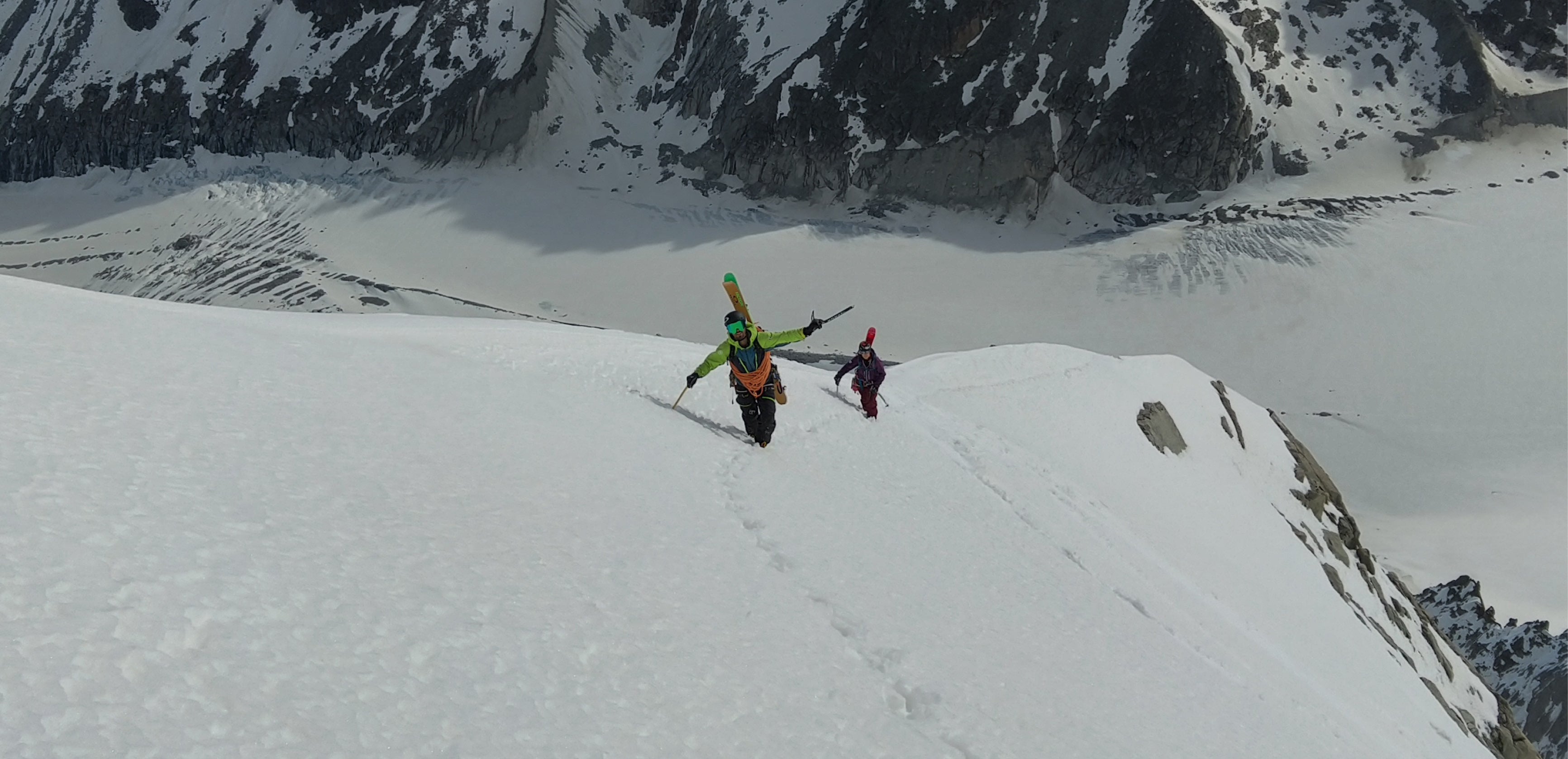
Microplastics "on the rocks" by Professor Marco Grasso
Published on 12/03/2021
There’s no place like home, there’s no place like home. Or so the refrain goes. But when home is an Earth where, however remote or apparently wild, no location exists that has not been despoiled by humankind, it puts a new spin on things. And this is one of the aspects that led scientists like the Nobel prize-winner Paul Crutzen – who, sadly, recently passed away – to characterize human ubiquitousness as the mark of a new geological period called the Anthropocene.
In fact, a study recently published in the prestigious journal Nature found that the weight of objects produced by humans is far superior to all living biomass; and bear in mind that this mass doubles approximately every twenty years. The planet has become a huge warehouse for man-made products, the so-called ‘anthropogenic mass’. This is not an accident, nor is it a mere unintentional consequence of 7.9 billion people crammed onto the planet; on the contrary, it is the result of an explicitly rapacious model of unrestrained economic growth based on the intensive use of natural resources, renewable and non.

The same work argues that the global mass of plastic alone is greater than the overall mass of all terrestrial and marine animals combined. Yes, plastic: it is everywhere, from the object that has long borne the burden of global villainy – the plastic bag – to clothing, furniture, computers and smartphones, the granules in toothpaste exalted for that extra-clean feel, the gloss we smear onto our lips, the medicines that cure our ills; it is one of the hamster wheels of the global economy. Waterproof, thermally and electrically resistant, infinitely ductile, its diversity of shapes and colours means it has an almost endless life. Alas, it is derived from petroleum and is extremely polluting, and it is accumulating exponentially everywhere. From the 1.6 million km2 – three times the size of France, the biggest artefact on our planet – of the Great Pacific Garbage Patch to microplastic particles almost invisible to the naked eye. Reports of their presence abound in food, drinking water and in the air we breathe; they have been detected in the gastrointestinal tract of marine animals, as well as in the human intestine. At the close of 2020, a new threshold was crossed, one that further conflates the organic and inorganic worlds: for the first time researchers detected fragments of microplastics in human placentas. In an interview to the Italian newspaper La Repubblica, the lead author of the study claimed that “with the presence of plastic in the body, the immune system is disturbed and recognizes as ‘itself’ even what is not organic. It’s like having a cyborg baby: no longer composed only of human cells, but a mixture of biological and inorganic entities. The mothers were shocked.”
But not only do microplastics enter the most cherished parts of our inner sanctum, they are also on an unstoppable march into the most remote parts of the big wide world: the perennial ice of the Poles and the almightiest mountains.


In an effort to explain how these micro particles manage to conquer the world, the Alfred Wegener Institute for Polar and Marine Research in Germany and the WSL Institute for Snow and Avalanche Research SLF in Switzerland undertook an in-depth study, the results of which were published in Science Advances. They found high concentrations of these particles in the Arctic – in ice floes drifting in the Fram Strait and on the Svalbard islands – and in glaciers of the Tschuggen and Davos areas of the Swiss Alps. The study concluded that microplastics were blown there by wind currents, as another work related to a remote and pristine mountain catchment in the French Pyrenees had previously shown.
The German-Swiss research group examined the microplastics trapped in ice and snow samples from the sites under investigation with an infrared microscope and, through the different wavelengths of infrared light absorbed and reflected, identifying the different varieties of plastic. In the Arctic snow, they mainly found polystyrene, polyvinyl chloride (PVC), polycarbonate, polylactic acid, and polyimide, whereas in the Swiss samples, polyamide, varnish, rubber type 3, nitrile rubber, ethylene-vinyl-acetate, and polyethylene (PE) prevailed. Furthermore, they established that, on average, these microplastics are about the same size as pollen grains, and – astonishingly – that they could have been transported to both locations by air from places as far-flung as the equator.
Another study published in Nature Communications found up to 12,000 microplastics particles per litre of sea ice in five remote regions of the Arctic Ocean. Researchers found fragments of packaging, paint, nylon, polyester and cellulose acetate that is commonly used in the manufacture of cigarette filters in every sample. Some of the particles were only eleven micrometres in diameter – one-sixth the diameter of a human hair – and a concentration of two to three times more microplastics than past measurements was registered. The Nature Communication study also found that the main sources of microplastics are abandoned fishing equipment travelling thousands of kilometres via ocean currents – for instance most of polyethylene is believed to come from the Great Pacific Garbage Patch – and increased shipping and fishing in the Arctic region, whose sea has become a massive conveyor belt to transport plastic waste.
Another recent study published in the same journal, Nature Communications, found that the Arctic is extensively contaminated by microplastic fibres that originate from the seemingly harmless act of washing polyester clothes in Europe and North America. The study focused on seventy-one surface water samples collected from Norway to the North Pole and in the Canadian High Arctic. Twenty-six more samples were taken at a depth of 1,000 metres in the Beaufort Sea, north of Alaska. Specifically, the study found that more than 92% of the microplastics were fibres, and that 73% of these were polyester of the same width and colours as those used in clothing.
From one frozen terrain to others: besides Antarctica, microplastic have also been discovered in the ice close to the dizzying heights of the summit of Mount Everest.

 While the issue of litter on Everest has long concerned both locals and global environmentalists, a study even found microplastics in the ice of a location called ‘the Balcony’, a platform a few hundred metres from its 8,850-metre summit. All the samples collected in eleven spots on Everest ranging from 5,300 metres to 8,440 metres above sea-level contained microplastics: on average thirty particles per litre of water, with the most contaminated one containing a whopping 119 particles per litre.
While the issue of litter on Everest has long concerned both locals and global environmentalists, a study even found microplastics in the ice of a location called ‘the Balcony’, a platform a few hundred metres from its 8,850-metre summit. All the samples collected in eleven spots on Everest ranging from 5,300 metres to 8,440 metres above sea-level contained microplastics: on average thirty particles per litre of water, with the most contaminated one containing a whopping 119 particles per litre.
When ice coming from what should be pristine environments like the most remote corners of the Arctic, the Alps, and the top of Mount Everest, not to mention the placenta of a pregnant woman, contain the same major by-product of our lifestyle – plastic – alarm bells should be ringing. So loudly that we should be clutching our ears in pain. The evidence required to prompt drastic action exists, it has long been provided by scientists investigating the Earth’s current ecological crisis, but it would be flippant to expect that this alone could pave the way to reversing the critical situation. Rapid and profound cultural changes must condemn humanity’s brutalization of the planet, with incisive action required to avert the drastic implications of the relentless production and use of plastic. Let us heed those alarm bells wisely.

Marco Grasso is Professor of Economic and Political Geography at the Università of Milan-Bicocca. His research interests include international environmental policy and climate change governance. He currently works on a project on the role of the fossil fuel industry in climate change and the decarbonisation of energy systems.


